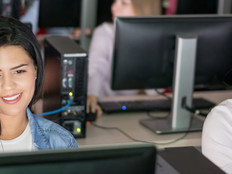As colleges and universities across the U.S. virtually send off the class of 2020, the University of Missouri (Mizzou) went the extra mile by helping families plan virtual celebrations for their newly minted graduates.
With the ongoing pandemic hindering traditional graduation festivities, the university’s staff was forced to be creative as they brainstormed different ways to honor the big day for students and families. From designing animated graduation-themed social media stickers to publishing popular dining hall recipes, the university was thinking outside of the box when it came to 2020’s virtual celebrations.
“We are throwing a million ideas on the wall, and now we’re peeling things off that have stuck,” says Kristen Smarr, the deputy chief marketing and communications officer in charge of Mizzou’s virtual graduation ceremonies. “There’s a lot of energy around this. We have a profound desire to honor our students.”
MORE ON EDTECH: These are the 3 remote learning technology must-haves for higher ed.
A Proper Virtual Graduation Lasts 24 Hours
Over a 24-hour period beginning on May 15, Mizzou organized various online ceremonies. The school kicked it off with recorded video greetings from the chancellor and provost before streaming it on the school’s website and social media.
“There’s nothing that can replace an in-person celebration, but it’s important that our students and their loved ones have an opportunity to celebrate this important moment,” Smarr says. “We want it to be a fun, respectful, energetic and happy 24 hours.”
As individual schools and colleges within the university organized their own virtual ceremonies, many planned live, interactive events using videoconferencing tools such as Microsoft Teams, Zoom and even YouTube.
Meanwhile, Smarr and her team focused on a daylong social media campaign for the virtual celebration, aggregating video greetings from celebrities and alumni to post throughout the 24-hour period. They also encouraged the graduating class of 6,000 students, as well as their families and friends, to post photos and videos with the hashtag #MizzouMade.
MORE ON EDTECH: Read about how now is the time for higher ed esports programs.
Personalized Social Media Graphics for a Special Day
To help students celebrate their graduations, the university designed graduation-themed graphics for students to post on social media. This included Facebook profile frames, fun Instagram effects like animated mortarboards and Giphy stickers of 2020 tassels and Truman the Tiger, the university’s mascot.
Using a cloud aggregation tool, the university planned to capture all the tagged content before reposting it on the university’s commencement website, where it will be available for family members who may not be on social media.
To encourage virtual parties at home, the university created a “virtual party checklist” with instructions on how to schedule a Zoom or Facebook Live event. University staffers also designed downloadable, printable banners, posters and yard signs that read “Class of 2020” and “Proud Mizzou Grad.”
Other fun assets included recipes for beloved campus dining hall treats, such as Mizzou’s popular peanut butter pies.
Old Fashioned Mail: Say More with Less
As the university was planning the virtual celebrations, Smarr noticed that faculty enjoyed making videos to convey personalized messages for students. She advised staff in Mizzou’s colleges and schools that while using video is fine, technology is not always the most meaningful option.
For example, if faculty members wanted to send a special congratulatory message to a particular student—or even three or four students—they might want to consider writing old-fashioned letters to mail to students.
While technology plays a major role when it comes to helping higher ed institutions save money and increase efficiency, a simple handwritten note can sometimes convey more.
“In this day and age, someone reading a note will know that you took a lot of time to write it,” Smarr says.











